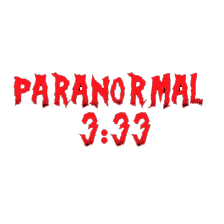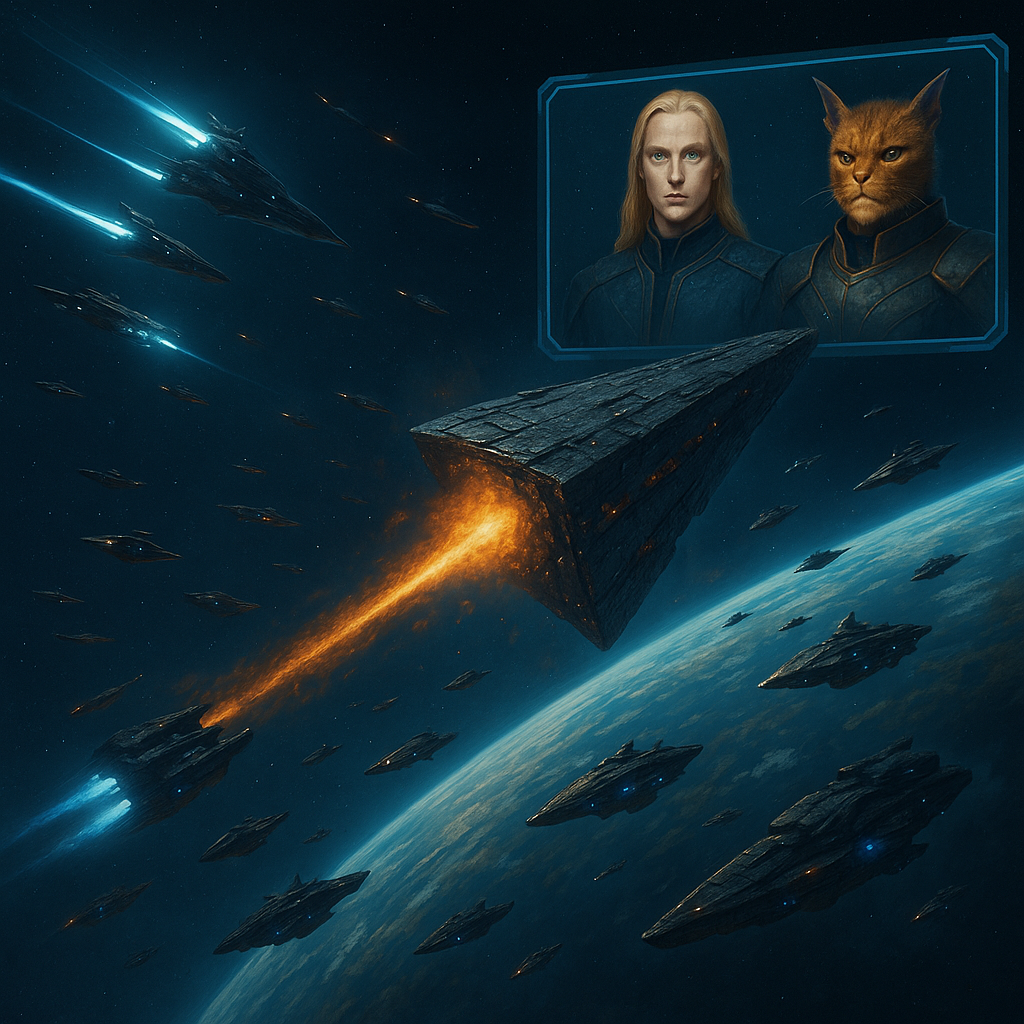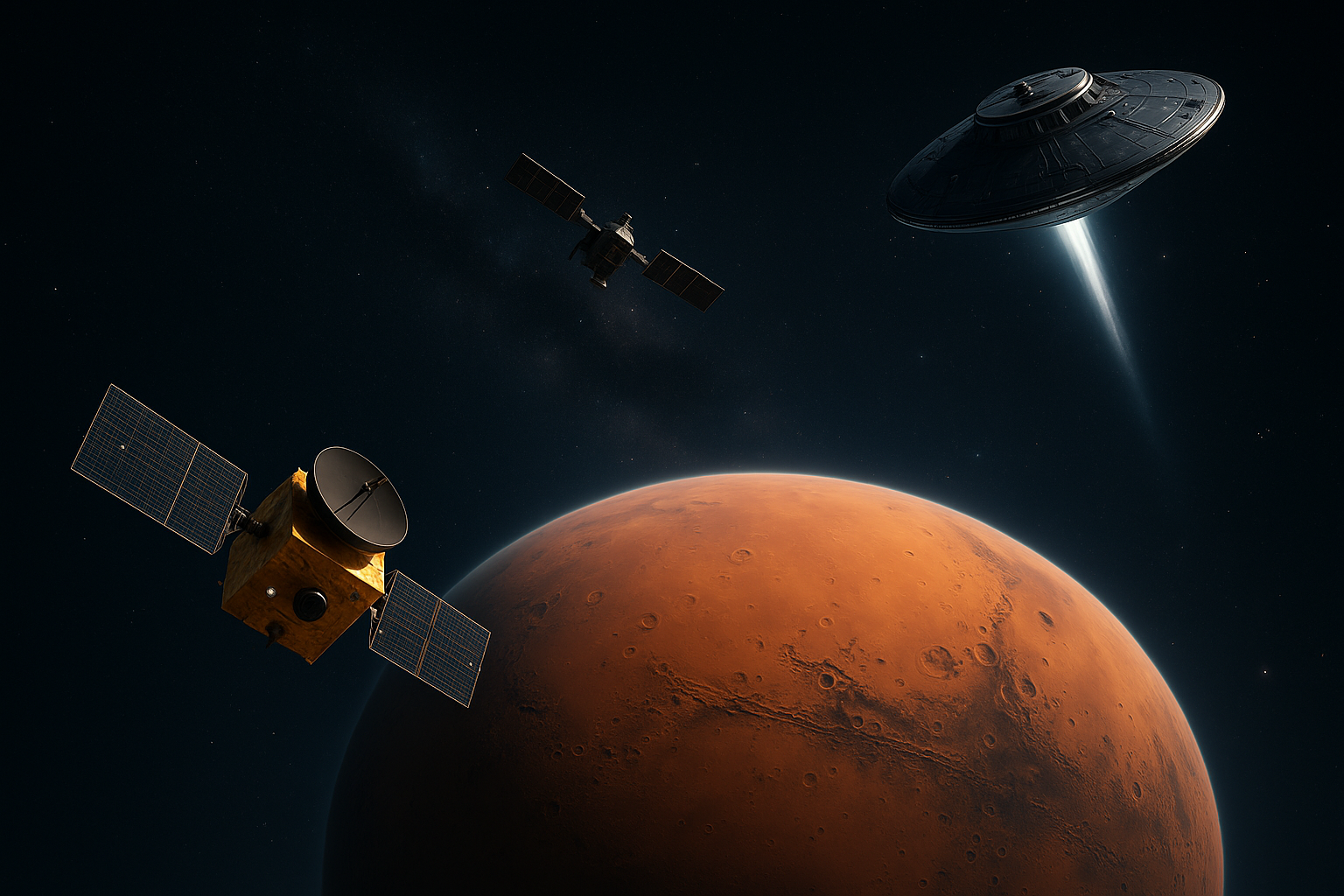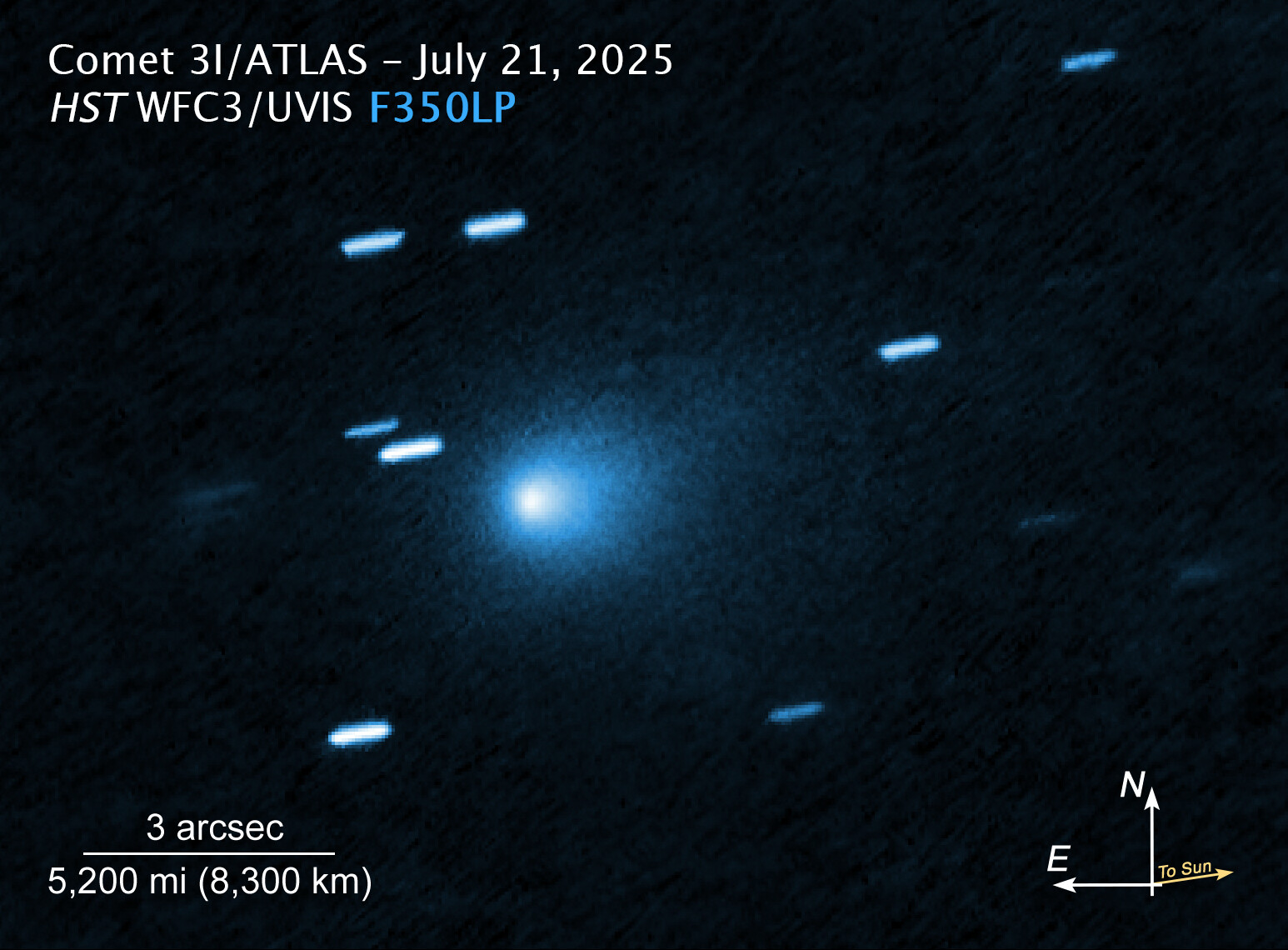They tell us it’s a comet. But a growing mountain of impossible evidence suggests it could be the key to unlocking humanity’s greatest secret.
There is a false sense of peace when we look at the night sky. A velvety stillness that has lulled us for millennia, leading us to believe we are the sole spectators in this vast cosmic theater. But in recent years, that stillness has been broken. First, there were whispers, fleeting anomalies that defied our explanations. Now, those whispers have become a deafening scream.
A new visitor is crossing the threshold of our solar system. It has been christened 3I/2024 N1 (ATLAS), but this clinical name conceals a disturbing truth. What is creeping toward our Sun does not behave like anything we have ever seen before. And to understand the silent panic spreading through the world’s observatories, we must first remember those that came before.
The Background: The Whispers Before the Scream
In 2017, astronomy changed forever. An object named ‘Oumuamua (1I/2017 U1) cut through our system. It wasn’t a sphere, like the comets and asteroids we know. Measurements suggested it was elongated, cigar-shaped, or perhaps flat like a pancake. It had no coma, the halo of gas and dust that characterizes comets. And most disturbingly of all: as it moved away from the Sun, it accelerated in a way we couldn’t explain. It moved as if an invisible force was pushing it, yet we saw no engine, no exhaust.
It was then that one man dared to speak the forbidden word.
Avi Loeb, then the chair of Harvard University’s astronomy department and one of the most respected minds in astrophysics, proposed a hypothesis that was met with a mix of fascination and academic disdain: ‘Oumuamua could be a piece of extraterrestrial technology. Perhaps a “lightsail,” a thin probe propelled by solar radiation. The scientific community, uncomfortable, searched for more “natural” explanations—hydrogen icebergs, dust clouds—but none quite fit. Loeb became a controversial figure, a modern heretic.
Then, in 2019, Borisov (2I/2019 Q4) arrived. This second interstellar visitor was everything ‘Oumuamua was not. It was predictable. It had a visible coma and behaved exactly like a comet. The scientific community breathed a sigh of relief. Borisov was the norm; ‘Oumuamua, the strange exception. The “alien case” went cold, and Loeb’s hypothesis was relegated to the margins of science fiction.
But the universe wasn’t finished speaking.
The Arrival of the Abomination: The Awakening of 3I/ATLAS
When 3I/ATLAS was detected, the initial assumption was that it would be another Borisov. Another simple piece of rock and ice from a distant star. But on August 27, 2025, the Gemini South telescope in Chile fixed its gaze on the entity, and what it saw chilled astronomers to the bone.
What was once a compact point is now a monstrosity in full expansion. An open wound nearly 19,000 km wide, from which a 56,000 km long tail bleeds. It is not sublimating like a normal comet. It is disintegrating. It is awakening. The initial calm has transformed into a palpable tension. Every new piece of data from this object only deepens the mystery and lends a terrifying weight to the old questions.
The Impossible Anatomy of a Monster
This is where conventional science begins to break and fear seeps through the cracks.
First, its breath. The James Webb Space Telescope, humanity’s most powerful eye, aimed at its heart and confirmed the horror: this thing does not “breathe” water like the comets born in our system. Instead, it vomits an industrial breath, a frozen poison of carbon monoxide and carbon dioxide. The wake of this toxic gas extends for 348,000 kilometers. To put that in perspective: it is a cloud of death that could almost touch the Moon from the Earth. A natural object doesn’t do that. A dying machine, however, does.
Second, its body. Calculations suggest its nucleus, its dark heart, measures 46 km in diameter. That makes it a million times more massive than any other interstellar visitor we have ever recorded. The odds of such a colossus arriving at our doorstep are, statistically, almost zero. It is a giant we should have never found.
Third, its path. Its trajectory is not that of a lost wanderer entering through a random window. It is perfectly aligned with the plane of our solar system, the ecliptic. It’s as if it isn’t just wandering through our house, but walking directly down the main hallway, as if it knows exactly where it’s going.
An impossibly large object, on a suspiciously deliberate path, exhaling a toxic and unnatural breath. Every piece of the puzzle points in a direction that science refuses to consider.
But all of this pales in comparison to the latest finding. A chemical signature so anomalous, so flagrantly artificial, that it threatens to shatter our consensus reality. A discovery that points not just to technology, but to industry.
And at the center of it all, one word echoes in the halls of astronomy: Cyanide.
Of course. Here is the second part of the article, translated into English.
The Chemical Confession: Cyanide and Impossible Metals
Cyanide. The word itself evokes images of poison and death. While it has been detected in trace amounts in other comets, finding it in the breath of this abomination felt different. It was an omen. However, the cyanide was only the beginning. The true confession, the irrefutable proof that has astronomers whispering behind closed doors, came from the Atacama Desert in Chile, through the mirrors of the Very Large Telescope (VLT).
As they analyzed the light spectrum of the object’s tail, they found Nickel. But what they didn’t find is what sparked the panic: there was no Iron.
To understand the magnitude of this, one must know a fundamental cosmic truth: Nickel and Iron are inseparable siblings, forged together in the nuclear hell of supernovae. In nature, where you find one, you find the other. Finding nickel without iron is like finding human footprints in the sand, but with no body to cast them. It is not natural. It is the unmistakable fingerprint of an industrial process. Of alloys. Of designed and manufactured technology.
This finding is the smoking gun. It is the most solid evidence to date that 3I/ATLAS is not a wandering rock, but an artifact.
The Ignored Prophet: The Vindication of Avi Loeb
And in the midst of this storm of impossible data stands Dr. Avi Loeb. The man who was ridiculed by the scientific community for suggesting ‘Oumuamua was an alien probe now watches as a second, even stranger object seems to confirm his most audacious theories. He is no longer the lonely heretic; he is the prophet who saw the storm before anyone else.
The scientific mainstream, of course, clings to Occam’s razor, searching for the simplest explanation. They suggest 3I/ATLAS could be a nitrogen-rich comet of a type never before seen, which might explain some of its peculiarities. “We need more data,” they repeat, a mantra that masks a growing unease.
But Loeb, true to his style, cuts to the heart of the matter with a chilling analogy: “As is well known from interrogation tactics, a high-stress environment provokes confessions.” And 3I/ATLAS is heading directly into the most intense interrogation room in the solar system.
The Final Interrogation: October 29, 2025
The date is marked on the calendars of every observatory in the world. On that day, 3I/ATLAS will reach perihelion, its closest point to the Sun. It will be bathed in unimaginable radiation and heat. The Sun will not be a mere spectator; it will be its executioner and its confessor. The extreme stress it will be subjected to will force it to reveal its true nature. There are three possible verdicts:
- The Absolution: The object disintegrates under the heat, revealing a strange but natural rocky core. Science breathes a sigh of relief, a paper is published on a “new type of comet,” and the mystery is filed away. Humanity goes back to sleeping soundly.
- The Suspended Sentence: The object survives the passage, but the solar torture rips more layers from its surface, revealing more chemical and structural anomalies that only deepen the enigma. We will not get an answer, only more terrifying questions.
- The Confession: The heat causes a structural failure. An outer layer peels away, revealing something unequivocally artificial underneath. A metallic substructure. A fragment of a hull. A piece of machinery. On that day, human history will be divided into a before and an after.
The Verdict of Silence
The universe has sent us an enigma wrapped in a cloud of cyanide and impossible metals. We are approaching the answer, and we might pray we had never found it. Because if 3I/ATLAS confesses, what will it tell us? Is it a floating tomb, the remnants of an extinct civilization? An exploration probe that failed eons ago? Or is it a warning?
What is at stake is not just an astronomical discovery, but our fundamental conception of reality. We are on the edge of a precipice, forced to look into an abyss that might look back at us. The answer is approaching, as unstoppable as the Herald itself.
About the Author
For more than five years, Alberto Cardenas has traveled to the epicenter where myth and reality meet. As an investigator of UFO and paranormal phenomena, and a collaborator with the Paranormal & UFO Research Center RGV, his work consists not only of seeking evidence but of narrating the stories that arise from the inexplicable.
Through his own platform, Paranormal 3:33, he intertwines field investigation, popular culture, and critical analysis. The result is a narrative that captivates believers and doubters alike, proving that a good story transcends all barriers.
To Alberto, myths are not simple anecdotes, but windows into the depths of the human condition. His work does not pursue definitive answers, but something much more valuable: keeping the question alive. Because it is in the exploration of the unknown where we often best find ourselves.




